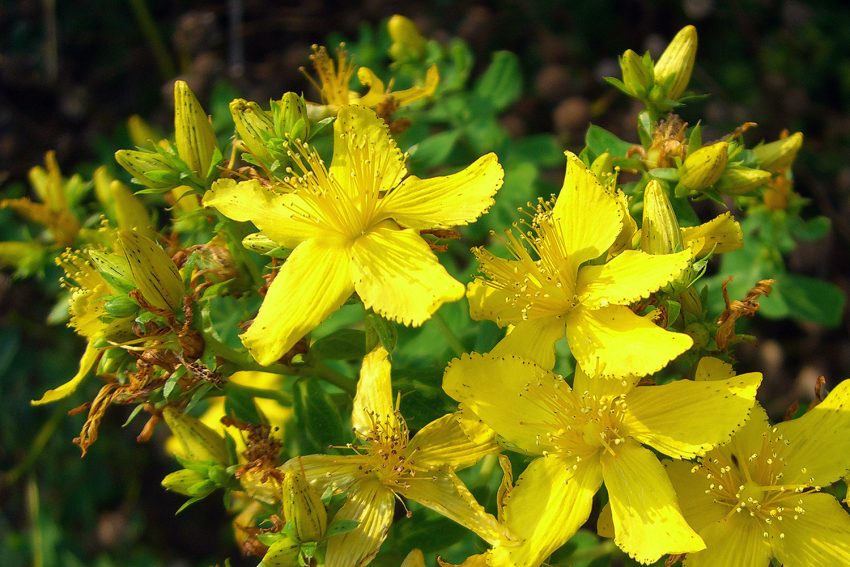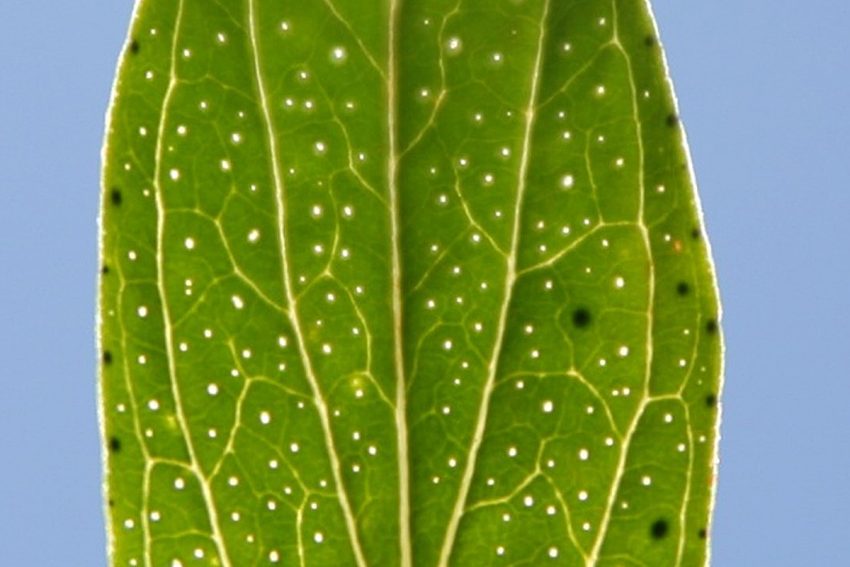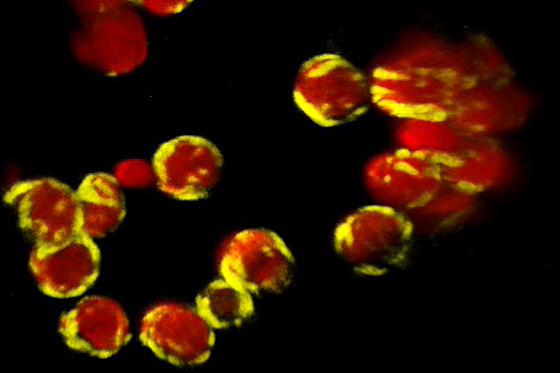Picture of the Month: From the Plant to the Microorganism From the Institute of Pharmaceutical Biology
Our picture of the month February shines in bright yellow and brings color into the gray winter month. It comes from the Institute of Pharmaceutical Biology and shows the flower of St. John’s wort. Clinical studies show that extracts from the plant can alleviate mild to moderate depression. The substance hyperforin is primarily responsible for the effectiveness. Professor Ludger Beerhues and his research group are investigating how this substance can be biotechnologically produced in the laboratory.

St. John’s wort is one of the most studied medicinal plants. Picture credit: Ludger Beerhues/TU Braunschweig
St. John’s wort is one of the most studied medicinal plants. It has antibacterial as well as anti-inflammatory effects and is therefore used for wound healing. It also contains the pigment hypericin. This is exuded as a red juice when rubbing the petals between the fingers. Hypericin is currently being studied in connection with the treatment of various types of tumors.

The hyperforin is found in the bright spots along with essential oil. Picture credits: Andreas Müller/TU Braunschweig
St. John’s wort is also known to many for its effect as an antidepressant for mild to moderate depression. The active ingredient that comes into play here is called hyperforin. Hyperforin, along with essential oil, is stored in rounded containers in the leaves. These spheres are so large that they span the entire leaf. In backlighting, they are clearly visible as translucent dots.
More than just one St. John’s wort
In addition to the medicinal plant, St. John’s wort, there are about 500 other St. John’s herbs worldwide. They all contain hyperforin-like components. Chemically, these constituents are very complicated and therefore difficult to reproduce in the laboratory. In the plants themselves, they are present only in low concentrations. Therefore, it is a challenge to obtain sufficient amounts of the hyperforin-like substances from the various St. John’s wort plants. However, these are needed to perform extensive biological tests with them or to enhance the pharmaceutical effects by modifying the substances.
Producing hyperforin in the laboratory
For this reason, Professor Beerhues and his team are pursuing a biotechnological approach: “We are working on replicating the biosynthetic pathways of the active substances of St. John’s wort in microorganisms. This is how we want to achieve higher yields.” To do this, they first need to investigate how exactly St. John’s wort produces its complex ingredients.

So-called prenyltransferases are involved in the biosynthesis of hyperforin, which are made visible by coupling to yellow fluorescent protein. The enzymes are located in the envelope of chloroplasts, which appear red rather than green under the conditions chosen here. Picture credit: Eline Biedermann, David Kaufholdt/TU Braunschweig, Germany.
These biosynthetic pathways – that is, the path from the individual building blocks to the active ingredient – are relatively long. The individual steps are supported by various enzymes. The researchers have to identify the genes for these enzymes so that they can then transfer them into microorganisms and string them together.
The challenge here is that some of the enzymes involved are bound to the chloroplasts in St. John’s wort, where photosynthesis takes place. Microorganisms, however, do not have chloroplasts, so the team has to find alternative solutions for a functioning arrangement. At the same time, the researchers have to integrate the introduced biosynthetic pathway into the basic metabolism of the microorganisms.
